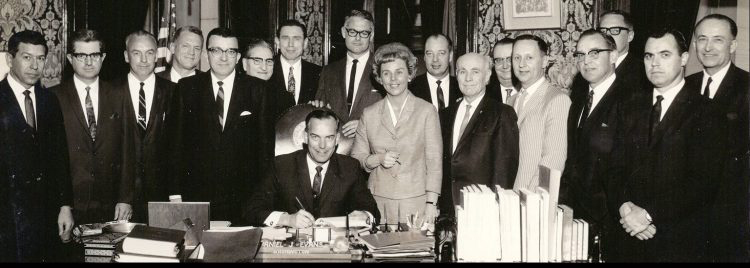College History
The first classes were held in the Edison Vocational Technical Institute on Capitol Hill, when Seattle Community College—now Seattle Central College—opened in 1966 as part of the public school system.
Seattle Colleges serves all of metropolitan Seattle and its surrounding communities and comprises the largest community college district in the state, educating more than 45,000 students each year.
The first classes were held in the Edison Vocational Technical Institute on Capitol Hill, when Seattle Community College—now Seattle Central College—opened in 1966 as part of the public school system.
The State Community College Act of 1967 established college districts apart from the public schools, with a mandate to provide an open door to education for all who seek it. A long-range plan called for three campuses in the city, and planning began immediately for North Seattle College and South Seattle College.

Community College Act signing ceremony, 1967
By September 1970, all three colleges opened together for the first time as a multicampus district. Seattle Vocational Institute, affiliated with Central, joined the district in 1991 under the state’s Workforce Training and Education Act. The district also includes five specialized training centers located throughout the city:
- Health Education Center, Seattle Maritime Academy, and Wood Technology Center, affiliated with Central.
- Georgetown Campus and NewHolly Learning Center, affiliated with South.
Students choose from an array of more than 130 academic and career and technical education (CTE) programs, the largest number in the state. The curriculum has led the way as the Puget Sound area moved from a manufacturing and resource-based economy to information-based industries.
Like the region, the college population is dynamic. The student body is the most diverse in the Northwest, reflecting nearly 80 different languages spoken in homes throughout the city.
By design, each of the colleges reflects its community. While the colleges are an integral part of their neighborhoods and offer certain unique educational programs, all are comprehensive and offer programs in college transfer, career and technical training, adult basic education, and continuing education.